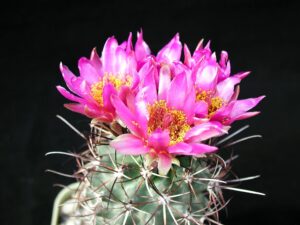Birds perched on cacti evoke a sense of enchantment and wonder in the landscape of nature. These striking tableaux not only illustrate the intricate connection between fauna and flora but also symbolize resilience, survival, and the delicate balance of ecosystems. In examining the relationship of birds with cacti, we delve into the multifaceted symbolism associated with this striking image, as well as the existential realities that govern these colorful avian residents.
Understanding the habitat of cacti is essential for grasping the significance of birds in these arid environments. Cacti are remarkable succulents perfectly designed to thrive in harsh conditions. Their adaptations enable them to conserve water and endure extreme temperatures, thus providing a unique ecosystem for various birds, which in turn symbolizes endurance and strength. The birds that inhabit these remarkable plants display an extraordinary ability to adapt, much like the cacti themselves.
In many cultures, the image of a bird perched on a cactus transcends mere visual appeal. It serves as a powerful metaphor for resilience in the face of adversity. Birds, often considered messengers between heaven and earth, symbolize freedom and transcendence. When they rest on cacti, it signifies a harmonious existence despite the perhaps inhospitable surroundings. This peculiar pairing underscores a profound lesson about adaptability—the capability to thrive amidst challenges, whether they be environmental, personal, or spiritual.
Exploring the Species: Avian Residents of Cacti
The desert biome is home to numerous bird species that interact with cacti daily. Each species exhibits unique adaptations and relationships with these prickly giants. Notable examples include the Gila Woodpecker, the Cactus Wren, and the verdant Green Jay.
The Gila Woodpecker, for instance, plays a pivotal role in the life cycle of cacti. By excavating holes in the cactus, it creates nesting sites not only for itself but also for other species, thereby fostering a rich interdependent community. The woodpecker’s presence is a clear representation of industriousness—a testament to the hard work required to carve out a niche in such a challenging realm.
Similarly, the Cactus Wren, Arizona’s state bird, exhibits a remarkable affinity for these plants. Known for its exuberant songs and robust nature, the Cactus Wren often constructs intricate nests within the spiky arms of saguaro cacti. This symbiotic relationship exemplifies unity; the bird finds safety among the spines, while the cactus benefits from the wren’s pest control activities.
Symbolic Interpretations: What Does It Mean?
The imagery of birds on cacti resonates on numerous symbolic levels. One prevalent interpretation is the notion of overcoming adversity. Just as cacti withstand the brutal heat of the desert sun, birds perched upon them embody triumph over hardship. This iconic image serves as a continual reminder of nature’s tenacity and enduring spirit.
From a spiritual perspective, birds traditionally symbolize freedom. When seen in conjunction with cacti, this takes on an added dimension. Cacti, being emblematic of resilience, provide the foundation upon which the birds can take flight. Thus, the juxtaposition fosters an inspiring narrative about breaking free from limitations, urging individuals to seek their own freedom even when faced with daunting obstacles.
Furthermore, the interplay between color and form contributes to the symbolism. The vibrant hues of birds against the stark green or spine-laden brown of the cactus highlight the beauty that emerges in contrast. This can be interpreted as a metaphor for diversity within unity—how variance can enhance one’s experience even in seemingly hostile environments.
Environmental Considerations: A Cautionary Tale
Despite the otherwise romanticized image of birds on cacti, it is crucial to address the environmental challenges that threaten these ecosystems. Climate change, habitat destruction, and urbanization have increasingly encroached upon the habitats of both cacti and their avian companions. As these changes unfold, the delicate balance that nature has maintained for eons is becoming precarious.
Activism and conservation efforts are essential in preserving these habitats and their inhabitants. Understanding the intricate relationships between cactus and birds not only enhances our appreciation for nature but also encourages us to take action. By protecting these ecosystems, we ensure that future generations will continue to marvel at the sight of a bird perched gracefully upon a cactus, embodying the themes of resilience and adaptation for years to come.
In summary, the symbolism of birds on cacti unfolds a rich narrative steeped in the themes of endurance, freedom, and adaptability. This remarkable interplay serves as a reminder of the resilience inherent in both flora and fauna, urging us to take heed of our environmental responsibility and foster a profound appreciation for the wonders of nature.





Leave a Comment